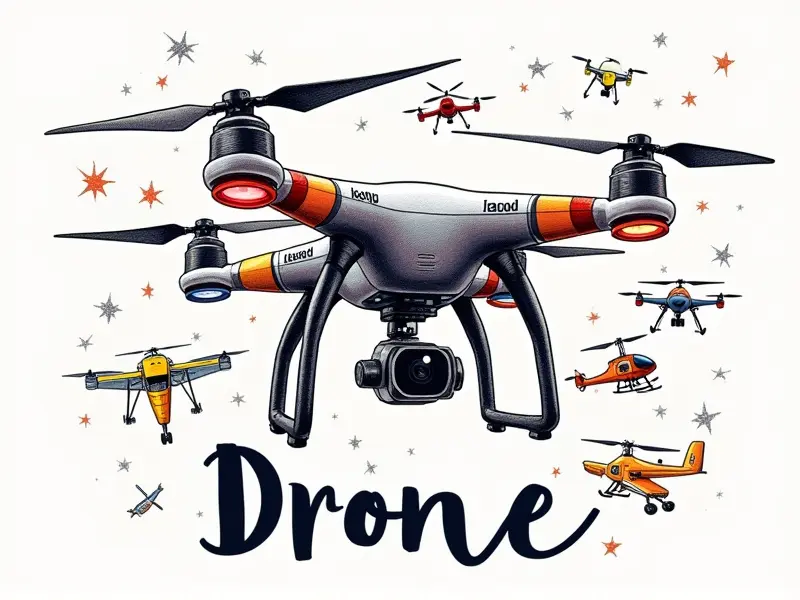Drone flight modes explained

Understanding Drone Flight Modes Simplified
Drone enthusiasts often find themselves overwhelmed by the myriad of flight modes available on modern drones. Each mode serves a unique purpose and can significantly impact your aerial photography or videography experience. This article aims to demystify these modes, making them accessible even for novice users.
Essential Guide to Drone Flight Modes
To get the most out of your drone, it's crucial to understand its flight modes. These settings allow you to customize how your drone behaves in various scenarios, from simple point-and-shoot operations to complex cinematic shots. Let’s dive into some key flight modes and their functions.
Unlocking Your Drone's Full Potential with Flight Modes
Your drone comes packed with advanced features designed to enhance its performance and versatility. By mastering the different flight modes, you can unlock new levels of control and creativity in your aerial photography or videography projects.
Top 5 Essential Drone Flight Modes Explained
- Manual Mode: This mode gives full manual control over pitch, roll, yaw, and throttle. Ideal for experienced pilots who want complete control without any autopilot assistance.
- Gimbal Lock: Ensures that the camera remains stable regardless of drone movement, allowing for smooth video recording.
- Heading Hold Mode: Maintains a constant heading while flying, which is useful for steady shots and following subjects without drifting sideways.
- Follow Me or Orbit Mode: Allows the drone to follow you automatically, making it easier to capture yourself in action from above.
- Point of Interest (POI) Mode: Keeps the camera focused on a specific point while you move around it, ideal for creating dynamic shots and panoramas.
Navigating Drone Flight Modes Like a Pro
Becoming proficient in drone flight modes requires practice and patience. Start with simpler modes like Heading Hold or Follow Me to get comfortable before moving on to more advanced settings such as Manual Mode for precise control over every aspect of your flights.
Beginner's Guide to Drone Flight Settings
If you're new to drones, it’s essential to familiarize yourself with basic flight modes first. Heading Hold and Follow Me are great starting points due to their ease of use and stability benefits. As you gain confidence, explore other modes that offer more control over your drone's behavior.
Demystifying Drone Flight Mode Options
The abundance of flight mode options can be daunting for beginners. However, understanding the purpose behind each mode will help you make informed decisions about which settings to use in different situations.
Manual vs. Semi-Automatic Modes
- Manual Mode: Offers full manual control over all aspects of flight and camera operation.
- Semi-Automatic Modes: Provide a mix of automated features for ease-of-use while retaining some level of user input.
Gimbal Stability vs. Camera Control
- Gimbal Lock: Ensures the camera remains stable during flight, crucial for smooth video recording.
- Camera Control: Allows manual adjustments to pan, tilt, and zoom functions for creative shooting angles.
Maximize Your Drone Skills with Modes
To truly master your drone, experimenting with different flight modes is key. Practice using each mode in various conditions to discover which settings work best for specific scenarios or projects.
Simplifying Drone Flight Modes for Perfect Flights
While drones offer numerous advanced features, it’s important not to overlook the basics. Understanding fundamental flight modes and their applications can lead to more successful flights and better results in your aerial photography and videography work.
Tips for Using Different Flight Modes Effectively
- Start with basic settings like Heading Hold or Follow Me before moving onto Manual Mode.
- Experiment with different modes under controlled conditions to see how they perform.
- Read your drone’s manual thoroughly and consult online forums for additional tips from experienced pilots.
Dive into Drone Flight Modes: Tips and Tricks
Once you've mastered the basics, there are many nuances within each flight mode that can be explored to optimize performance. For instance, tweaking gimbal settings or adjusting camera sensitivity can significantly enhance your footage quality.
Tips for Advanced Users
- Practice manual control in Manual Mode to improve precision and stability.
- Leverage POI mode creatively by moving around the point of interest dynamically.
- Use Follow Me mode with GPS waypoints for automated tracking shots over long distances.
Essential Drone Flight Mode Tips
To ensure you make the most out of your drone’s flight modes, here are some crucial tips:
- Always Start Simple: Begin with basic modes and gradually work up to more complex settings.
- Practice Makes Perfect: Regularly practice using different modes in various environments.
- Stay Updated: Keep your drone’s firmware updated for the latest features and improvements.
Conclusion
Mastery of drone flight modes is essential for achieving optimal performance and creativity with your aerial equipment. Whether you're a beginner or an experienced pilot, understanding how to navigate these settings will elevate your skills and enhance your projects significantly. So don't hesitate—dive into the world of drone flight modes today!

